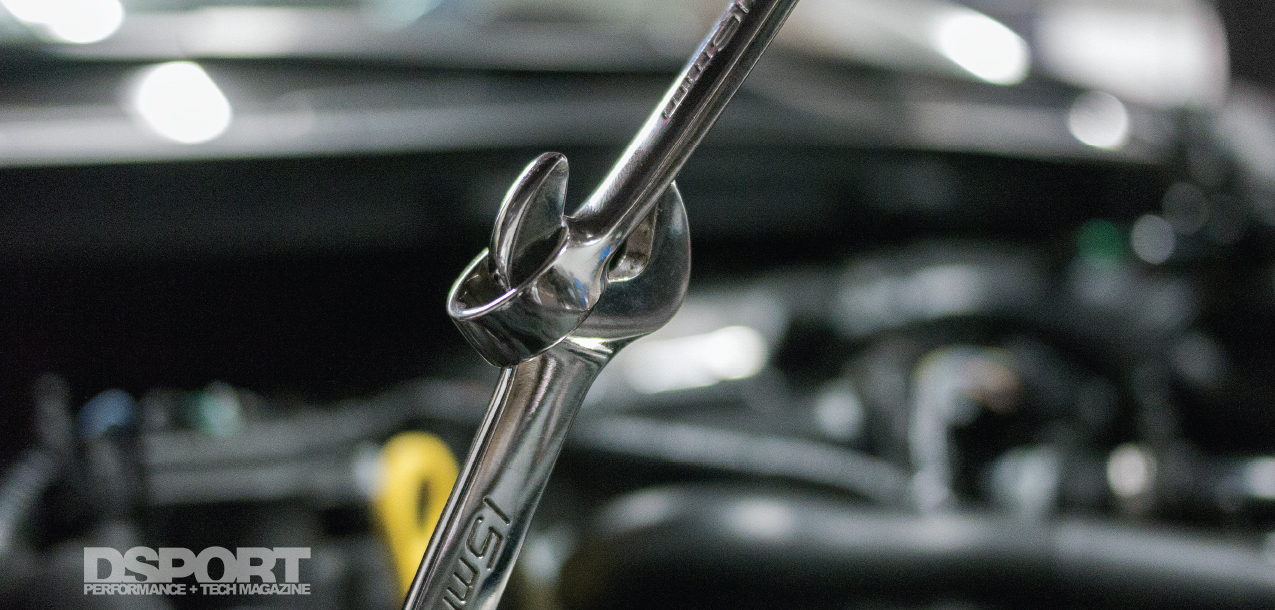What’s Your Favorite Automotive Hack?
 Richard
Richard
Leveraging what’s Around
When it comes to improvising, the home mechanic will look around the garage in search of the right tool or something that looks like the right tool to get a job done. Probably one of the best or most useful tricks that I’ve come up with is taking a tool intended for one purpose and modifying it to work in another. Working on cars often requires leverage, and finding that leverage to replace pure strength is working smarter, not harder. When a proper breaker bar is unavailable or inaccessible, I just grab the hollow tube of my racing Jack and slide it over my ratchet handle. Instant leverage. This can be applied to box and combination wrenches as well. In the case that you don’t have a tube or pipe large enough to get around the end of the combination wrench, you can also take a second wrench and interlock it with the closed-end of the wrench that is being used. You’ve now doubled the length of the handle of the wrench and gained valuable leverage.
 Cameron
Cameron
Windex Diagnostics
An engine not firing on all cylinders leads to troubleshooting headaches that no one wants when they’re in a rush. At a past race, I noticed one of my competitors appeared to be down on power. The problem worsened with every subsequent lap, and the driver eventually pulled into the pits for the mechanic to diagnose the issue. Scanning the toolboxes and pit areas nearby, the mechanic grabbed a bottle of Windex and returned to spray it onto the exhaust headers. On the first header pipe, the solution quickly burned off in a steam cloud as expected. However on the second header pipe, it ran down the side as the metal was not hot enough to burn it off. It was very much a “well there’s your problem” moment. While this method doesn’t reveal what the problem is, it does show where to start looking when in a hurry.
 Magnus
Magnus
Put a Dent in it
I discovered the most useful garage repair trick back in the 80’s, when my Saab started leaking oil from the front crank seal. On a Saab 900, this seal is located in the back of the engine and I found that there wasn’t much space between the crank pulley and the firewall. I wasn’t sure how to get the pulley off in order to reach the seal, so I called the Saab dealership to check how much they charged to do the job. They advised me that the engine needed to be taken out in order to change the seal, so it would cost me about $1,000. I did not want to pay that much, so I looked at it again to see how I could get an inch or two of extra room to get the pulley off. I ended up using a heavy duty pry bar and a piece of wood, to put a big enough dent in the firewall so that I could remove the pulley. A couple of dollars and a few hours later, the seal was changed, the car was put back together again and I still had $998 in my bank account.
 Jeren
Jeren
A Stud Too Many
The best trick I’ve learned and used many times is the double nut technique to remove studs that have gotten stuck or damaged. If you have never used this trick you need to try it next time you find yourself dealing with a stud that will not budge. You will need two, same size and pitch, non-self-locking style nuts for the stud you are trying to remove. Thread one of the nuts upside down onto the stud, then thread the other nut right side up on to the stud. Once the two nuts are tightened against each other, you will be able to remove the stud by turning the bottom nut against the top nut. The bottom nut will only tighten against the top one and loosen the entire stud. This trick works better than many stud removal tools and kits because you will not damage the threads on the stud, enabling you to use it again.
 Tyler
Tyler
Pulling Codes
My favorite automotive hack has to be the use of a paperclip to read engine diagnostic codes from OBD1 vehicles. I learned this trick from my older brother and it stuck with me ever since. The process is relatively simple and works with many OBD1 cars. You simply open up a paperclip and make it into a horseshoe or U-shape. You then find out where your OBD port is and use the paperclip to jump the ground pin and diagnostic terminal pin in the port. With the car on and not running, the check engine light will flash specific patterns, usually in long and short lengths like Morse code. Normally, the longer flashes count as 10 and the shorter flashes are one. Add the numbers together and you have your check engine code.


